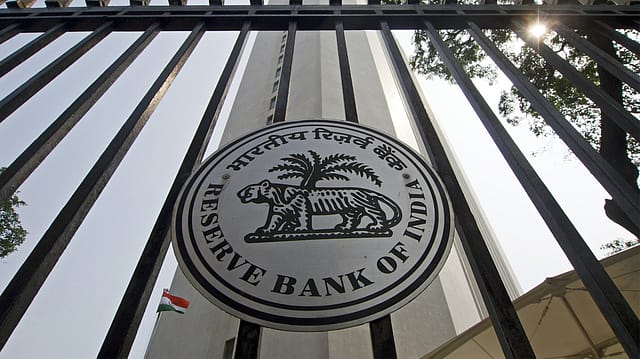Key takeaways from RBI monetary policy
ADVERTISEMENT

The Reserve Bank of India's monetary policy committee on Thursday decided to hold both the repo and the reverse repo rate as recovery from the pandemic remains incomplete.
This is the tenth straight meeting where the key policy rates have been left unchanged.
While analysts expected the RBI to raise the reverse repo rate, the MPC maintained its dovish stance flagging potential downside risks to economic activity from the third wave of the Covid-19 pandemic.
Here are the key takeaways from the monetary policy statement:
Inflation: The MPC also noted that consumer price inflation has edged higher since its last meeting. The hardening of crude oil prices present a major upside risk to the inflation outlook, it said. The central bank retained CPI-based retail inflation forecast of 5.3% for FY22. It, however, expects CPI inflation to moderate to 4.5% in FY23. RBI governor Shaktikanta Das said that inflation is expected to peak in the fourth quarter of the current fiscal.
The MPC noted that the potential pick up of input costs is a contingent risk, especially if international crude oil prices remain elevated. "The pace of the domestic recovery is catching up with pre-pandemic trends, but private consumption is still lagging. Covid-19 continues to impart some uncertainty to the future outlook."
December 2025
The annual Fortune 500 India list, the definitive compendium of corporate performance, is out. This year, the cumulative revenue of the Fortune 500 India companies has breached $2 trillion for the first time. Plus, find out which are the Best B-schools in India.
Growth outlook: The MPC projects FY23 GDP growth at 7.8% with Q1FY23 at 17.2%; Q2 at 7.0%; Q3 at 4.3%; and Q4 at 4.5%. "In India, real GDP growth at 9.2% for 2021-22 takes it modestly above the level of GDP in 2019-20. Private consumption, the mainstay of domestic demand, continues to trail its pre-pandemic level," Das said. The persistent increase in international commodity prices, surge in volatility of global financial markets and global supply bottlenecks can exacerbate risks to the outlook, he added.
Banks: The RBI governor cautioned that banks and non-banking financial companies need to be watchful as the unwinding of the loose monetary policies could have spillover effects. "We have to be, however, watchful of the impact of the pandemic on the banking and NBFC sectors when the effects of regulatory reliefs and resolutions fully work their way through. Banks and other financial entities would be well advised to further strengthen their corporate governance and risk management strategies to build resilience in an increasingly dynamic and uncertain economic environment. They also need to continue the process of capital augmentation and building up of appropriate buffers," Das said.
e-RUPI and crypto
The Reserve Bank of India increased the cap of e-RUPI vouchers issued by the central government and state governments from ₹10,000 to ₹1,00,000 per voucher. It also allowed such e-RUPI vouchers to be used more than once (until the amount of the voucher is completely redeemed).
During the press briefing, Das reiterated that private cryptocurrency is a big threat to India’s macroeconomic and financial stability. "It is my duty to tell the investors who invest in cryptocurrencies to keep in mind that they are investing at their own risk," he said. "They also need to keep in mind that the cryptocurrency has no underlying, not even a tulip."
MSME
The central bank also raised the National Automated Clearing House's (NACH) mandate limit to ₹3 crore from ₹1 crore for TReDS settlements. TReDS facilitates discounting or financing of receivables of micro, small and medium enterprises (MSMEs).
"RBI decision to increase mandate limit from ₹1 crore to ₹3 crore for trade credit to MSMEs, would provide sufficient funds for MSMEs to strengthen their business activities and to become more participative in the trade and manufacturing," said Pradeep Multani, President, PHDCCI.
Foreign investors: The central bank also enhanced the limit for investments under the voluntary retention route (VRR) scheme for foreign portfolio investors from ₹1.5 lakh crore currently to ₹2.5 lakh crore with effect from April 1, 2022. The VRR scheme was introduced in March 2019 to facilitate long-term investment by FPIs in debt securities issued by the government and corporates.
This, according to Multani, will provide additional sources of capital for domestic debt markets, including government securities.
